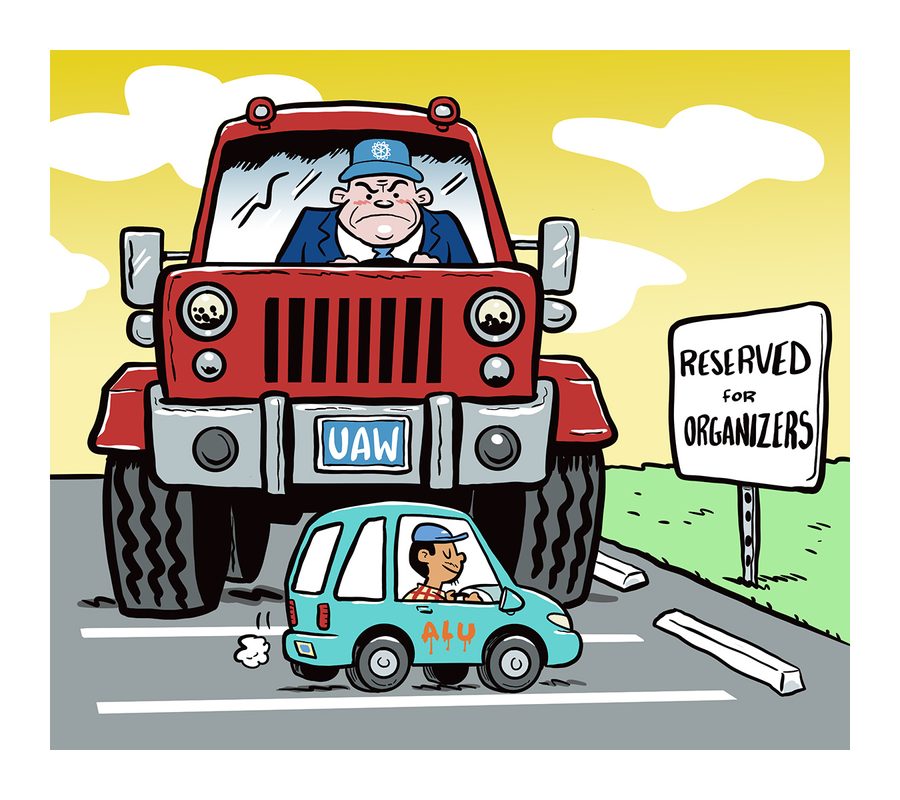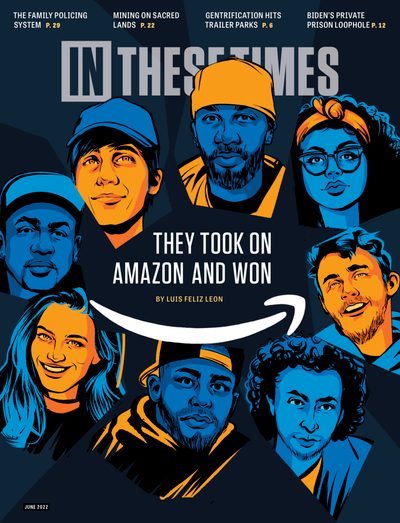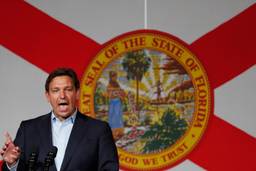The Amazon Labor Union Victory Shows That Jurisdiction Is Dead
No more arguing over territory or industries—we need multi-union coalitions capable of organizing on a national scale.
Hamilton Nolan

When news spread April 1 that the independent Amazon Labor Union (ALU) had won its union election at an Amazon warehouse on Staten Island in New York, the initial response from anyone who supports the labor movement was exultation at this unprecedented — and unexpected — victory for the working class.
The secondary response was a collective “In your face!” to mega-billionaire Amazon founder Jeff Bezos, who was shown that all the money in the world can’t crush the will for a union.
Now, we can all move on to what should be the next response: Forcing the union establishment to take a long, hard look at what it needs to change.
The ALU — a project of current and former Amazon workers as well as committed volunteer organizers — succeeded in organizing Amazon before any big, well-funded union could. That fact has produced a million insta-analyses: “They were in New York City, not Alabama — so they had the easiest target!” “The ALU was led by cool younger people — old union bureaucrats must be purged!” Etc.
Rather than indulge in that particular argument, I propose an adjacent conclusion that I think will hold true no matter where anyone lands on the specific tactical questions about the ALU victory. This is the lesson the union world should take from the ALU’s accomplishment: Jurisdiction is dead. By this I mean that all of the time unions spend arguing with one another over who has the right to organize which workers, in which industry, at which company is one gargantuan waste of time. Stop it. It’s useless. It is, in essence, a bunch of drivers arguing over a single parking space in one corner of a vast, empty parking lot. While an asteroid is approaching. It is not something that should be on the list of top 100 priorities for labor, given the current situation.
Who cares about jurisdiction in the first place? Well, many major unions consider this parochial concern to be the most important reason for the AFL-CIO to exist — to serve as a traffic cop, arbitrating petty arguments between unions that want to organize the same place. Inherent in this perspective is the belief that other things the central body of the labor movement could be doing — like, for example, building multi-union coalitions capable of organizing powerful employers like Amazon — are less important than this traffic cop role.
What has this approach gotten us?
It has gotten us a nation in which barely one in ten workers (including barely 6 percent of private sector workers) are union members, while economic inequality has been rising for decades. The idea that unions should have the right to lay claim to particular industries where 90 percent of workers are not union members is farcical. A perfect illustration of this absurdity is the fact that, in March, new Teamsters president Sean O’Brien told Bloomberg he “wants the Teamsters to be the only union that organizes workers at Amazon’s fulfillment centers and sorting hubs.” Less than two weeks later, the independent ALU had actually unionized an Amazon fulfillment center, which is one more Amazon fulfillment center than the Teamsters have unionized.
Unions serve workers. Not the opposite. What serves workers best is having a union now, not the abstract concept of a single union that owns their industry and may get around to organizing them years from now. Until union density in America reaches, say, 50 percent or more, we don’t need to hear any more jurisdictional arguments from unions about whose territory is whose. Instead, we need to see successful union campaigns in which millions of new workers are unionized.
Want to claim “jurisdiction” in an industry? Then organize it. Otherwise, make way for those who will.
To the credit of America’s union leaders, their public reaction to the ALU victory has uniformly been one of support. But that same victory throws into relief how pressing it is for those same unions to change the way they’ve been doing business for the past half century. No more individual fiefdoms jealously guarding their own shrinking islands of union territory, while the majority of working people flounder with no support from organized labor. The ALU inspired us all by unionizing the first 8,000 Amazon workers in the United States. Organizing the next 800,000 will require the combined efforts of many unions, and then some.
Rich, ruthless, and omniscient companies like Amazon will not be organized solely with GoFundMe donations, as the Staten Island warehouse was. Now is the time for the labor movement to start building multi-union coalitions capable of tackling employers on a national scale, and keeping up the fight long enough to win contracts in the face of endless litigation — think something like the Change to Win coalition, but more active, and aimed at individual companies.
Building multi-union coalitions requires unions to recognize the futility of arguing over jurisdiction, and instead do the opposite: Combine forces and organize without freaking out over who gets to put their label on the end product.
ALU leader Chris Smalls, whose vision made the Amazon union victory a reality, has already become a celebrated figure. In the end, his greatest contribution to the labor movement might be that he’s served as a blaring wake-up call. There is no room for egos or territorialism in a country of 10 percent union density. This fight is going to be expensive. Everyone, ante up.
Hamilton Nolan is a labor writer for In These Times. He has spent the past decade writing about labor and politics for Gawker, Splinter, The Guardian, and elsewhere. More of his work is on Substack.









